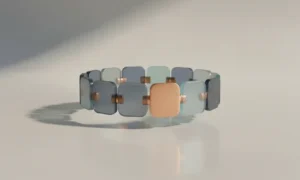Every year, new car models come out with impressive new technologies, from autonomous driving capabilities to more robust in-car touch screens. Hypothetically, these technological features can make a car safer, more convenient, more accessible, and to many people, cooler.
But increasingly, consumers are starting to prefer vehicles with less technology.
Why is this the case and how can you find vehicles like this?
The Drawbacks of High-Tech Vehicle Features
It’s not hard to see and imagine some of the benefits of having better, more powerful technologies available in our vehicles. But these benefits are not without drawbacks – and many consumers are acutely aware of this.
These are some of the biggest drawbacks that consumers are concerned about.
- Price. According to Tiger Okeley of Oak Motors, “High-tech features can be genuinely impressive and helpful – but they can also add a lot to the cost of a vehicle. Infotainment systems, digital sideview mirrors, wireless charging stations, and gesture controls often aren’t worth the extra money.” It’s true that superior visibility on the road and certain autonomous features can make you safer. It’s also true that infotainment systems can help you enjoy your road trips more, especially if you have kids. But is it really worth it if it costs you several thousand extra dollars? For many consumers, the answer is no.
- Lack of control. People also associate new technologies with a sort of relinquishment of control. With an old-school car, it’s relatively easy to understand all of the internal components and make replacements or upgrades as you see fit. But with new, advanced technology systems and cars, there isn’t nearly as much room for customization, and you’ll be at the mercy of manufacturer software updates for the foreseeable future. Also, many people inherently distrust autonomous driving features, especially if they’ve had negative experiences with them in the past. When people are driving, they want to remain in control.
- Maintenance and repairs. Certain technologies can make maintenance and repairs both more expensive and more complicated. It’s not easy to fix an issue with your car when it’s linked to a smart technology that isn’t easily replaceable. This means you probably won’t be able to fix the issue yourself, and you’ll probably pay more to have a professional do it. On top of that, the more “bells and whistles” you add to a complex machine, the more individual components there are to eventually present issues. Things can and will go wrong more frequently in any system with more internal components.
- Malfunctions and hiccups. Technologies aren’t perfect. Even if they’re new, impressive, and well-reviewed by consumers, there’s always the possibility of a malfunction or a hiccup. Given that driving is such a potentially dangerous activity, many consumers don’t want to take the risk. They also don’t want their entire vehicle to be bricked when these technologies become obsolete several years from now.
- Distractions and accidents. Some drivers are responsible enough to acknowledge that technology is a distraction for them. Touch screens and nifty entertainment systems are perhaps too interesting – and could therefore be a liability on the road. For consumers buying cars for their children, this is an especially noticeable concern.
- Security and privacy concerns. Some buyers also have concerns about their security and privacy. If your vehicle can be controlled through technological means, it can be hijacked via hacking. If your vehicle is constantly processing data, that data can be misused or stolen. Incidents like these are currently rare, but consumer concerns persist nonetheless.
- Social and cultural impact. Some people have a moral or ethical objection to vehicles with autonomous features, specifically. That’s largely because technologically upgraded vehicles are replacing certain jobs and industries.
Strategies for Finding Better Low-Tech Vehicles
If you’re interested in buying a lower-tech vehicle, these are some strategies that can help you.
- Buy used. One of the most straightforward options is to buy used vehicles instead of new ones. Many of these technologies didn’t even exist 10 years ago, so used car lots are some of the best places to do your searching.
- Buy base models. Base models are car models that have the least number of upgraded features. In addition to getting a car without sophisticated and objectionable extraneous technologies, you’ll save thousands of dollars on your purchase.
- Look for older models. Failing that, look for the oldest models on a given lot. Newer models are both more likely to have the latest advanced technology and more expensive.
- Special order. In some dealerships, you’ll have the option to place a special order. You can essentially build your car from scratch, foregoing all the technologies you don’t want and integrating all the technologies you do.
High-tech vehicles have a lot to offer, and there’s nothing wrong with wanting one. However, consumers are increasingly gravitating toward vehicles with less tech and limited tech as they begin to recognize the drawbacks of technological integrations – and this trend may continue well into the future, even as technologies get better and better.



































